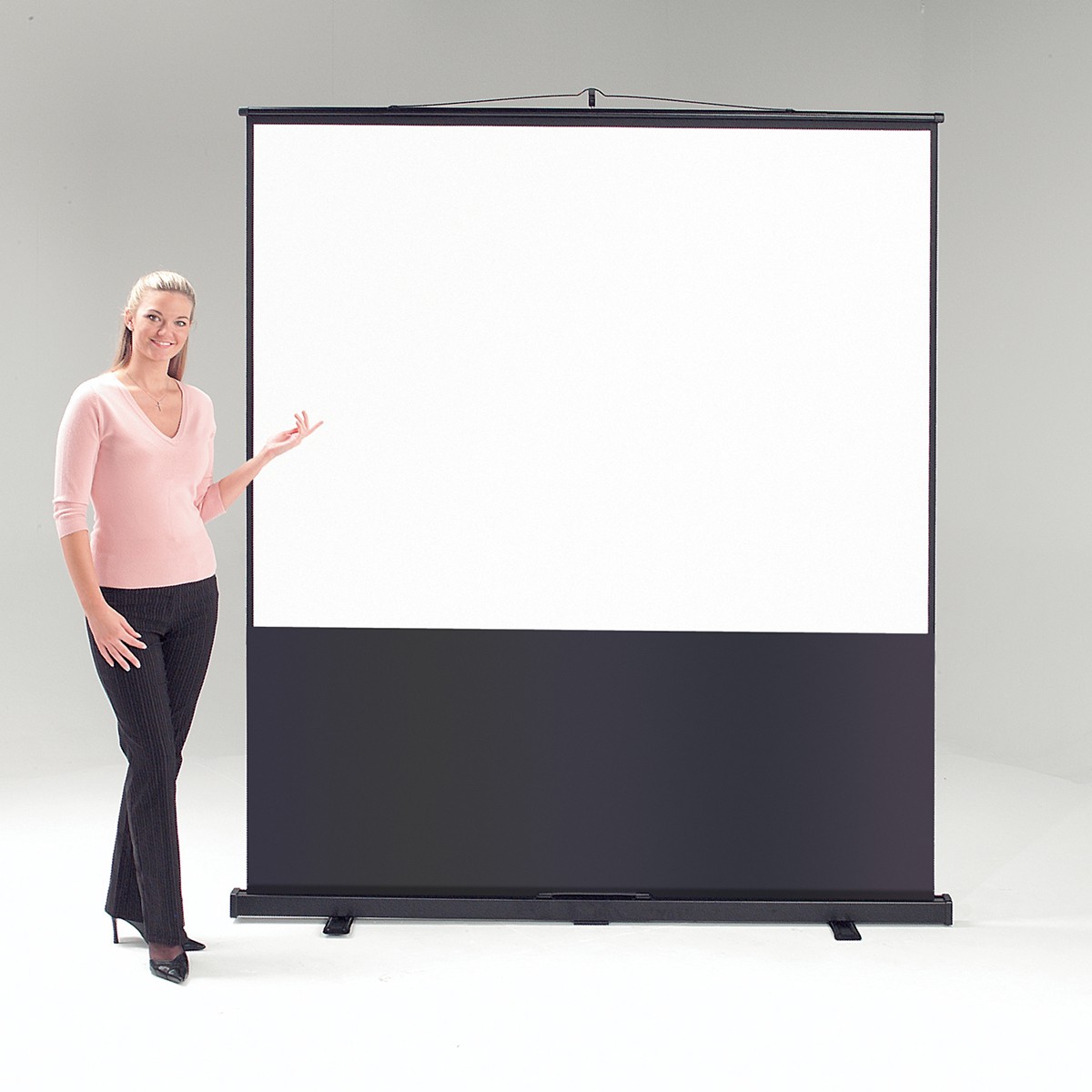Like soup without a spoon, there isn’t much use in a projector if you don’t have a projector screen.
Providing a smooth, non-reflective surface for projectors to create images upon, projector screens vastly enhance the aesthetic appeal of your projections and transform any space into one where a projector can thrive.
It’s for that reason that we always recommend that you invest in a projector screen for any room that you’re intending to fit a projector in. But what types of projector screen are there and how do their advantages stack up against each other? Join us as we take a look.
Pull-Down Projector Screens
A pull-down projector screen is exactly what it sounds like – a projector screen which, when retracted, resembles nothing more than a nondescript white rectangle, hanging on the wall. When pulled down, however, a full-sized projector screen is revealed.
The advantages of a pull-down projector are obvious, allowing a room to support a projector without a screen dominating a space when not in use.
Pull-down projector screens come in a huge variety of sizes to suit any application and are available in 4:3 or 16:9 aspect ratios, making them suitable for both data and entertainment purposes. Premium models can be controlled via a remote control, for one-press
Pull-Up Projector Screens
A pull-up projector screen (pictured) changes the formula by removing the need to attach a projector screen to your wall at all.
For those that rent premises or simply don’t have the wall space required to fit a projector to a wall, a pull-up projector screen can make an awful lot of sense. These projector screens are often portable too, making them a good option for impromptu presentations or sharing between workspaces.
However, because of this they require more set up on each use than a pull-down projector – something to keep in mind.
Fixed Frame Projector Screens
Fixed frame projector screens are affixed to your wall and remain there until you uninstall them. Think of them as like a TV that’s turned off.
For spaces which are going to see regular projector use and have sufficient available wall space, fixed frame projector screens make for an appealing option.
Rear Projection Projector Screens
These screens are designed to accommodate rooms where the projector is located behind the projector screen, rather than in front of it.
Available in pull-up and pull-down varieties, such projector screens are specially designed to let enough light through the screen to display the images, without being transparent.
Tripod Projector Screens
Easier to move from location to location than a pull-up projector screen, tripod projector screens are truly portable projector screens, retracting into a cylinder which can be easily moved from room to room and from premises to premises.
Tabletop Projector Screens
As the name implies, tabletop projector screens are built to be placed on a table. Ultra-portable, tabletop projector screens are ideal for when you’re pitching to businesses which don’t have a projector set up of their own.
Because of their small size and the need for support, they aren’t suitable for every purpose.



